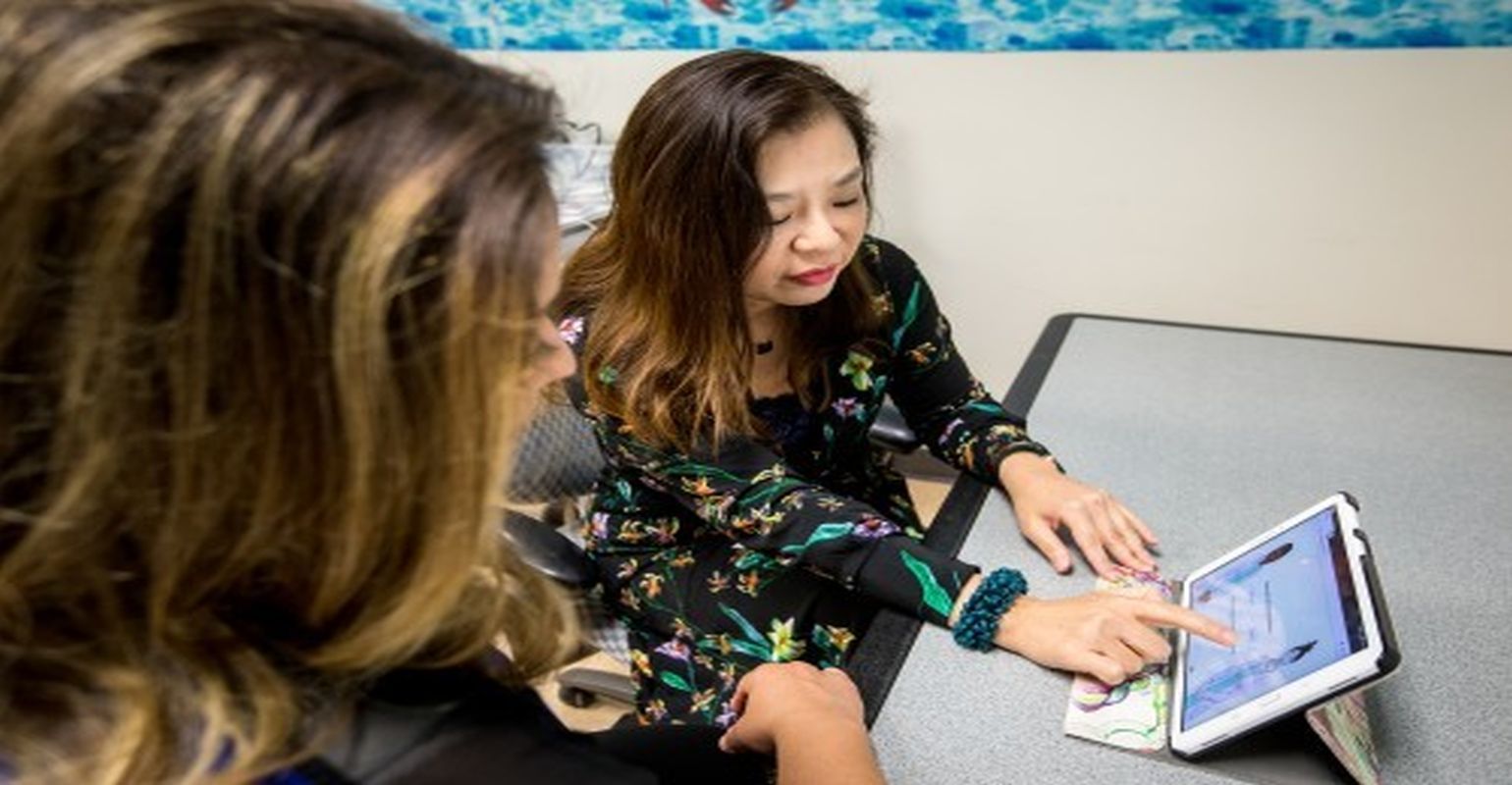Parents More Likely to Agree to HPV Vaccine After Education Intervention

It’s been almost 30 years since Salt-N-Pepa implored Americans to set their puritanical misgivings aside and talk about sex, and yet we still struggle with the subject; that fact is abundantly clear when you consider national HPV vaccination rates.
While the government-funded initiative Healthy People 2020 has targeted an 80 percent HPV vaccination rate for youth by age 15, the national rate for 13- to 17-year-olds stands at roughly 40 percent for females and 22 percent for males. In Arizona, the rates are even lower: roughly 36 percent for females and 17 percent for males.
Because the state requires parental consent for children under 18 to receive the HPV vaccination, Arizona State University College of Nursing and Health Innovation Associate Professor Angela Chen and colleagues designed a computer-based intervention program to educate parents about the virus and the risks associated with it, all while they sit in a waiting room.
In pilot studies that tested the intervention at the Maricopa County Public Health Clinic in Phoenix, researchers saw a nearly 100 percent success rate.
“The goal is to increase parents’ knowledge about HPV, because they don’t have motivation to get their kids vaccinated if they don’t understand what it is,” Chen said. “We never did a good campaign to promote [the HPV vaccine] nationwide, systematically. And school districts have concerns about talking about anything that has to do with sex.”
But squeamishness has done nothing to abate the rates of infection. The Centers for Disease Control estimates roughly 50 percent of sexually active individuals under the age of 25 are infected with the virus, for which there is no cure. The consequences of infection can be as benign as genital warts or as serious as cancer.
Roadblocks to vaccination
Vaccination has been approved for children as young as nine but Chen said she’s heard from both providers and friends that they don’t see the point in having children vaccinated so far in advance of puberty.
“That’s wishful thinking,” she said. “We wish they won’t engage in [risky sexual] behavior. But once they do, how can you prevent it? It’s too late. ... And besides, it’s very well documented that it doesn’t promote promiscuous behavior.”
In addition, some doctors still aren’t convinced of the vaccination’s efficacy. However, Chen said, “Epidemiological data has shown a significant drop in the number of young adults who got cervical cancer because of the HPV vaccine. So it shows it’s working.”
There are other roadblocks to vaccination besides a dearth of knowledge, and her team sought to address those as well.
“Cost and time are two major barriers for parents to get their kids vaccinated. So we tried to make it feasible for parents and kids but also feasible for clinics,” Chen said.
The Maricopa clinic where the pilot studies were carried out offers free, walk-in appointments, and because the intervention takes only about 10 minutes on an iPad while the parents sit in the waiting room, it doesn’t interfere with clinicians’ normal routine.
The HPV vaccination is not yet required by schools to attend, but others are - such as those for measles, mumps and rubella (MMR) and hepatitis B. So Chen and her team approached parents who were already at the clinic to get their children school-required vaccinations and asked them to give the intervention a try while they waited.
The computer-based program allows parents to choose a doctor avatar who walks them through a crash course on HPV. They answer true or false questions about the disease, and if they respond incorrectly, they’re provided with facts. Afterward, once fully informed, parents are asked if they’d like to add the HPV vaccination to the roster of shots their kids were already receiving.
The first pilot study, published by the Journal of Nursing and Health Care, targeted only Latino parents and children. In that instance, 95 percent of parents who underwent the intervention responded with intent to vaccinate their children, and 50 percent consented to immediate vaccination.
The second pilot study was opened up to parents and children of all ethnicities, and saw similar results. Chen expects that study to be published later this year.
Buoyed by the promising results, she and her team are now seeking funding to scale the study, and also to develop a game that will engage both parents and children.
“When we were working with the parents the kids would say, how come we don’t have something to play with? So we want to create a developmentally appropriate game for kids so that they’re learning but also having fun,” Chen said.
The game will include a component that allows them to play with a parent to encourage joint decision-making.
“I think that’s the best way to promote HPV vaccination,” she said, “to engage both parents and kids.”
Source: Arizona State University (ASU)
Robust infectious disease surveillance, including rapid subtyping of influenza A, is essential for early detection, containment, and public health reporting of novel viral threats.